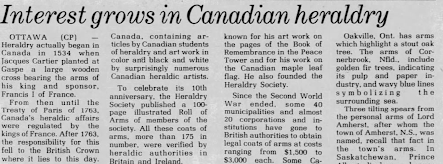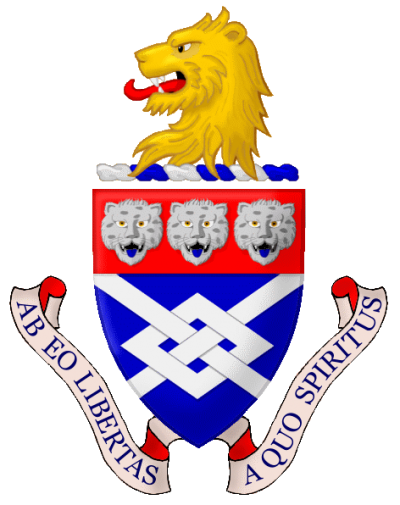Happy International Heraldry Day
If the coat of arms hanging prominently on your wall is authentic, it may offer some of the most interesting sleuthing opportunities of your family research. Of course, we are not referring to the local shopping center's "kiosk coat of arms" or "souvenirs" but an authentic, timely-registered coat of arms.
Today the use of "coat of arms" and "crest" is interchangeable, but for the purpose of genealogy the family researcher must know the difference. Strictly speaking "family coat of arms" or "family crests" do not exist and contrary to mall kiosk rhetoric, the only way to adopt an existing coat of arms is to prove you are a direct descendant of a rightful bearer. So, before embracing that treasured coat of arms, you must do your homework and solidify your kinship with the armiger (arm bearer) through a fully documented pedigree.
Even President Thomas Jefferson questioned the validity of the coat of arms in his possession.
Even President Thomas Jefferson questioned the validity of the coat of arms in his possession.
Originally coats of arms were granted to knights, but as Jefferson would have learned, by 1750 the business of marketing and furnishing "family arms" flourished.
Genealogy embedded in the Coat of Arms?
Using heraldic standards, family historians are often able to confirm ethnic origin, class status, and ancestral kinships. It is possible that by "decoding" a heraldic design, you will be able to support your genealogy research and connect the heirloom to an 11th century European ancestor. Or, you may discover that an immigrant ancestor acquired and registered arms with a heraldic authority.
Of course it is also possible that researching the origin of a coat of arms may have disappointing results. Since many of our ancestors were not entitled to arms, your research may reveal that you, indeed, possess a souvenir that yields no historical or genealogical data. Either way, heraldic records and repositories are valuable research resources especially for early colonial researchers.
Of course the family researcher will want to become familiar with heraldic terms, regulations, customs and designs. A great place to start...
England, Wales, and Northern Ireland: The College of Arms in London has gathered and preserved information on arm-bearers as early as 1483 from.
Scotland coat of arms were granted and matriculated by the Court of the Lord Lyon King of Arms. The Republic of Ireland granted and registered coat of arms. Its heraldic authority is The Office of the Chief Herald of Ireland.
Additional Information
Although there is a plethora of reference materials written on the relevance of coat of arms to your family research, following are websites of compiled listings:
Legitimate coats of arms are inherently full of genealogical data. By decoding the coat of arms, genealogists versed in the history of the twelfth to seventeenth centuries, can determine ethnic origin, class status, and social history of an ancestor using heraldic records and repositories. Most often at a3Genealogy we use heraldic records to distinguish families with common surnames, purge parasites from colonial genealogical trees, or to determine parentage, as well as home place and region.
In Europe, paternal coat of arms were used for proper identification from 1250 and 1500. But from 1500 - 1750, on both sides of the ocean, a coat of arms was used as a status symbol, designating rank, landownership, wealth or fame. So, a legitimate coat of arms may assist in connecting an immigrant ancestor to his European origin.
Where to Begin
 |
| The Owen Sound Sun, 3 De 1976 https://www.newspapers.com/image/726789755/ |
Of course the family researcher will want to become familiar with heraldic terms, regulations, customs and designs. A great place to start...
England, Wales, and Northern Ireland: The College of Arms in London has gathered and preserved information on arm-bearers as early as 1483 from.
Scotland coat of arms were granted and matriculated by the Court of the Lord Lyon King of Arms. The Republic of Ireland granted and registered coat of arms. Its heraldic authority is The Office of the Chief Herald of Ireland.
Although there is a plethora of reference materials written on the relevance of coat of arms to your family research, following are websites of compiled listings:
- Heraldry, Cyndi's List
- A Roll of Arms, Registered by the Committee on Heraldry of the New England Historical Genealogical Society (NEGHS)
- Heraldry, Fox-Davies, Arthur Charles, ebook, 2011
Kathleen Brandt
a3Genealogy@gmail.com




No comments:
Post a Comment